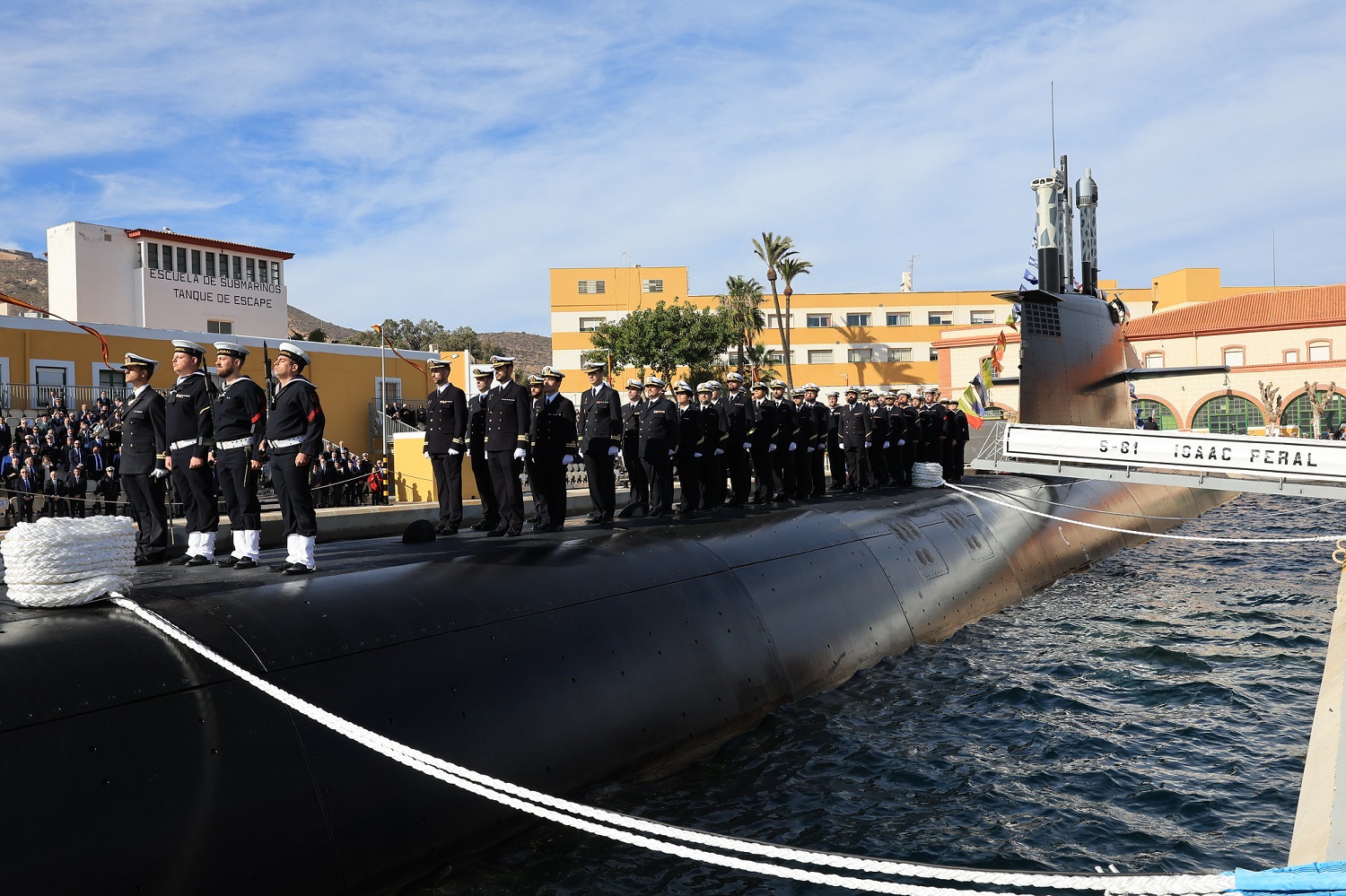In a historic event marking a pivotal juncture for both the Spanish Navy and the defense industry, the highly anticipatedS-80 Plus-class submarine, named “Isaac Peral,” was officially delivered to the Submarine Flotilla at the Cartagena Arsenal on November 30. This delivery signifies a monumental achievement as it introduces the inaugural submarine of the S-80 class meticulously constructed by Navantia in the Cartagena shipyard. The ceremony, graced by eminent civil and military dignitaries, was presided over by the Minister of Defense, Margarita Robles, accompanied by Admiral General Antonio Piñeiro Sánchez, the Chief of Staff of the Navy. Symbolizing the transfer of ownership, formal documents were exchanged, signifying the transition of the submarine from Navantia to the Ministry of Defense and subsequently to the Spanish Navy.
This monumental event marks not only a significant milestone in the recent annals of the Navy but also stands as a testament to the dedication and expertise of the Submarine Arm. It signifies a proud moment for the institution and its personnel. The S-80 program, heralding a new era, ensures the continuity of the Navy’s Submarine Weapon. Boasting a century-long legacy in submarine operations, this newest addition reinforces the Navy’s commitment to maritime defense. Prior to its deployment, the crew underwent rigorous training, certification, and sea trials, accumulating over 1,500 simulator hours to ensure comprehensive understanding and safe operation of the submarine in both surface and submerged conditions.

Characterized as oceanic submarines of medium tonnage, the S-80 Plus class submarines possess air-independent propulsion, enabling extended missions in distant scenarios while maintaining a minimal level of detectability. Their integrated platform control system ensures operational efficiency with reduced staffing and a high level of automation, almost on par with nuclear propulsion capabilities. The inauguration of the lead boat, the “Isaac Peral,” represents a long-awaited milestone, initially scheduled for 2011 but eventually realized in 2023. The subsequent deliveries of three more submarines are slated for 2024, 2026, and 2028, further solidifying Spain’s commitment to bolstering its naval capabilities. Moreover, the S-80 class submarines have been proposed for potential export, showcasing Spain’s technological prowess and fostering prospects for international collaboration in defense initiatives.
The S-80 Program represents a substantial technological leap compared to its predecessor, the S-70, since it will have an Integrated Platform Control System and a Combat System that, at the same time, will allow it to increase its degree of automation, significantly reduce the number of people needed to operate the submarine. This project has been the greatest challenge for Spanish shipbuilding to date. In this way, with the delivery of the S-81 submarine, “Isaac Peral”, the Navy incorporates a new unit demonstrating that it has the necessary resources to maintain and update the capabilities of a technologically advanced, balanced and expeditionary Naval Force, capable of facing present and future challenges with guarantees, and effectively fulfilling its mission. Investing in the Navy translates into security, well-being and prosperity for Spaniards, in addition to being a boost for the Spanish economy due to its contribution to national industry, technological innovation, research and the creation of highly qualified employment















